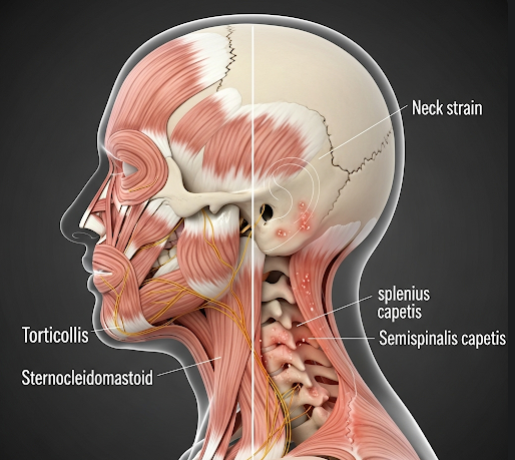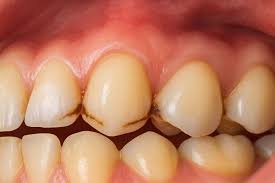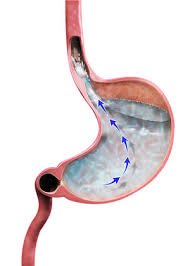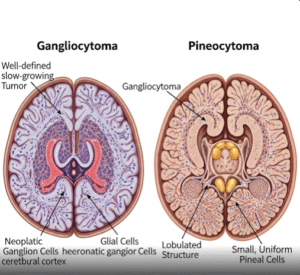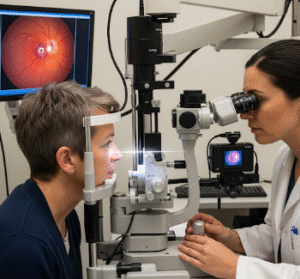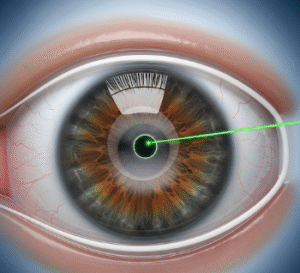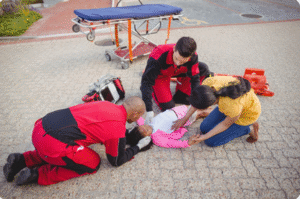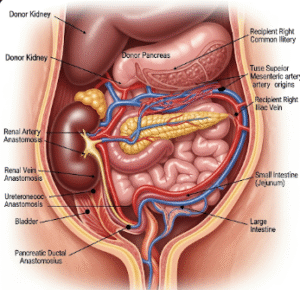Overview
Torticollis, commonly known as neck strain or “wry neck,” is a condition characterized by abnormal, often painful, tilting or rotation of the head. It can occur due to muscle contractions, injury, or neurological disorders. Torticollis can be congenital, appearing at birth, or acquired later in life due to trauma, repetitive strain, or infections. In South Korea, advanced orthopedic and physiotherapy services are available to diagnose, manage, and treat torticollis effectively. Early intervention, proper rehabilitation, and patient education are key to preventing chronic neck pain and maintaining normal neck function.
What is Torticollis?
Torticollis is a musculoskeletal or neurological condition in which the muscles of the neck contract involuntarily, causing the head to tilt to one side and rotate toward the opposite side. The condition can be classified into:
- Congenital muscular torticollis: Present at birth due to shortening or fibrosis of the sternocleidomastoid muscle
- Acquired torticollis: Develops later in life due to trauma, infection, inflammation, or neurological disorders
- Spasmodic or cervical dystonia: Neurological form causing involuntary, repetitive muscle contractions
In Korea, clinical evaluation, imaging, and specialized physiotherapy are used to identify the underlying cause and provide individualized treatment for torticollis.
Symptoms
The symptoms of torticollis may vary depending on type, severity, and underlying cause:
- Head tilt to one side with limited range of motion
- Neck pain or stiffness, often worsening with movement
- Muscle spasm or tightness in the neck and shoulder region
- Headache or facial discomfort
- Swelling or firmness in the affected muscle
- In congenital cases, a visible lump or mass in the sternocleidomastoid muscle
- Fatigue and difficulty maintaining normal posture
Severe or prolonged cases can result in secondary musculoskeletal problems, including shoulder or back strain.
Causes
Torticollis can arise from multiple factors depending on whether it is congenital or acquired:
Congenital Causes:
- Birth trauma causing injury to the sternocleidomastoid muscle
- Intrauterine positioning leading to muscle shortening
- Genetic or developmental anomalies
Acquired Causes:
- Trauma or whiplash injuries
- Repetitive strain from poor posture or occupational activities
- Infections such as upper respiratory tract infections or lymphadenitis
- Neurological conditions like cervical dystonia
- Side effects of certain medications affecting muscle control
In Korea, careful history-taking and diagnostic tests help identify the cause and guide treatment.
Risk Factors
Several factors increase the likelihood of developing torticollis:
- Congenital risk factors, including difficult birth or breech delivery
- Repetitive strain or prolonged poor posture
- Muscle imbalances or weakness in the neck and shoulder region
- Neurological disorders affecting muscle control
- Infections or inflammation in the cervical region
- Previous neck injuries or surgery
Awareness of risk factors helps patients and clinicians in Korea implement preventive strategies and early intervention.
Complications
Untreated torticollis can lead to a variety of complications:
- Chronic neck pain and stiffness
- Limited range of motion affecting daily activities
- Secondary musculoskeletal problems, including shoulder and back strain
- Development of compensatory posture issues and spinal deformities
- Headaches and jaw pain due to altered muscle balance
- Psychological impact due to persistent pain or cosmetic concerns
Korean healthcare providers emphasize early physiotherapy and intervention to prevent these long-term consequences.
Prevention
Preventive strategies for torticollis focus on maintaining neck strength, flexibility, and proper posture:
- Regular neck and shoulder stretching and strengthening exercises
- Avoiding prolonged poor posture during work, study, or device use
- Using ergonomic furniture and supportive pillows for sleeping
- Early treatment of neck injuries, infections, or inflammations
- Awareness of safe handling and positioning of infants to prevent congenital cases
In Korea, physiotherapists provide guidance on posture correction, exercises, and lifestyle adjustments to reduce the risk of torticollis.
Treatment Options in Korea
Treatment of torticollis in South Korea is multidisciplinary, involving orthopedic specialists, physiotherapists, and sometimes neurologists:
Conservative Management:
- Physical therapy: Stretching, strengthening, and posture correction exercises
- Heat or cold therapy: To reduce muscle spasm and inflammation
- Massage therapy: To relieve tightness and improve blood flow
- Pain management: Non-steroidal anti-inflammatory drugs (NSAIDs) for discomfort
Medical Treatments:
- Muscle relaxants: Prescribed for acute muscle spasm
- Botulinum toxin injections: Used in cases of spasmodic torticollis or cervical dystonia to relax overactive muscles
- Analgesic therapy: For severe or persistent pain
Surgical Treatments:
- Muscle release or lengthening procedures: Reserved for severe congenital cases or refractory adult torticollis
- Spinal or neurological interventions: In rare cases where nerve compression or structural abnormalities contribute
Supportive Care:
- Patient education on ergonomics, posture, and activity modification
- Regular follow-up with physiotherapists to prevent recurrence
- Multidisciplinary care for congenital or neurological forms of torticollis
South Korea’s advanced rehabilitation centers provide comprehensive programs, combining physiotherapy, medical management, and, when necessary, surgical intervention to ensure optimal recovery and quality of life for patients with torticollis.

